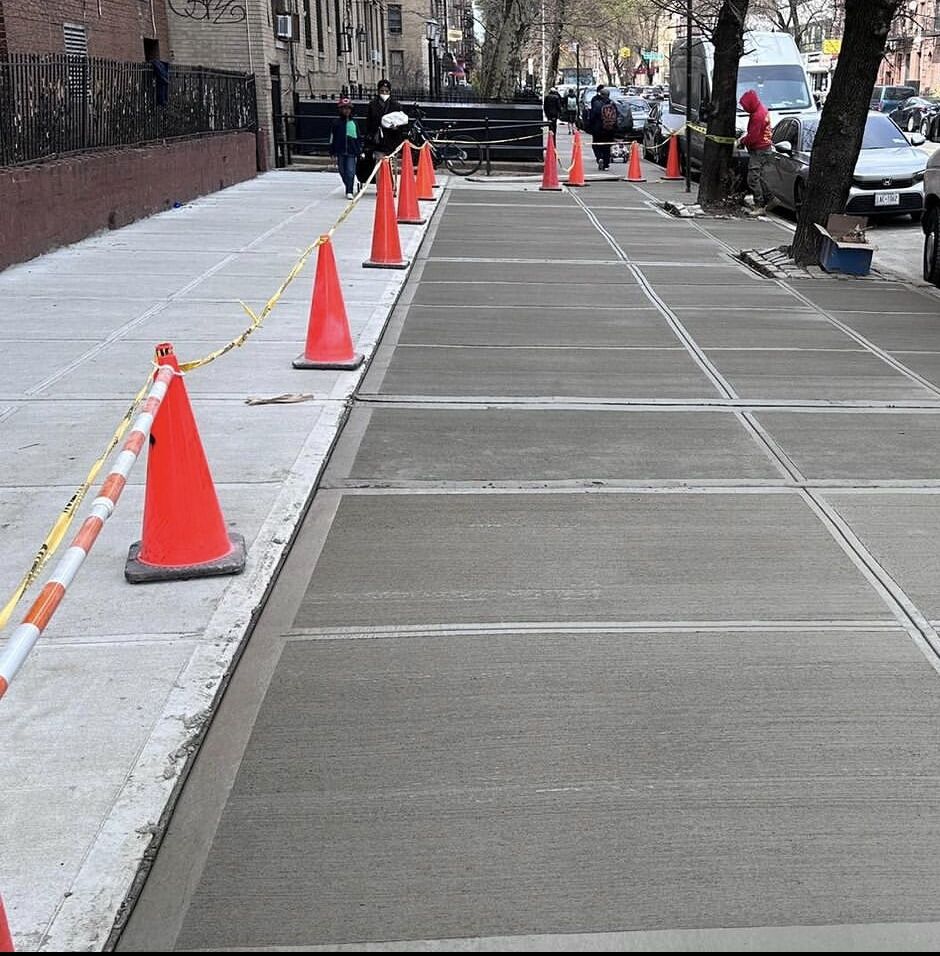Ever wondered why some sidewalks look like giant checkerboards? Those individual concrete squares beneath your feet aren’t random—they’re called sidewalk flags, and they’re the building blocks of safe, functional pedestrian pathways. Understanding what is a sidewalk flag matters whether you’re a property owner facing a violation notice or simply curious about urban infrastructure.
Understanding Sidewalk Flags
What is a sidewalk flag? Simply put, it’s one individual concrete section of your sidewalk—typically a 5’x5′ square panel that forms part of the larger walking surface. Think of them as puzzle pieces that create the complete sidewalk picture. These aren’t just decorative divisions; they serve critical structural purposes, allowing for thermal expansion and making repairs manageable.
When concrete heats and cools, it expands and contracts. Without these segmented flags, sidewalks would crack chaotically. The genius lies in controlled separation points—those grooves between flags aren’t accidents; they’re engineered solutions.
Material Specifications Matter
NYC regulations demand concrete poured according to Standard Highway Specifications, which means:
- Proper foundation material must meet specific subgrade requirements
- Concrete composition follows strict mixing and curing protocols
- Thickness standards ensure durability under foot traffic and weather extremes
The foundation deserves special attention. When replacing flags, existing foundation material can sometimes be retained and graded properly, saving both money and time. However, any substandard material must go—no shortcuts allowed.
Key Installation Requirements
Expansion joints are the unsung heroes of sidewalk longevity. These must appear every 20 feet, filled with specialized material extending the full depth of the flag. They’re then recessed and sealed to prevent water infiltration and debris accumulation.
Slope specifications prevent water pooling:
- Transverse slope: 1″ in 5′ (minimum) to 3″ in 5′ (maximum), pitching from building toward curb
- Longitudinal slope: Must run parallel to curb grade
These aren’t arbitrary numbers—they represent decades of engineering wisdom preventing ice hazards and water damage.
Repair Standards and Costs
Here’s the catch: patching isn’t permitted. If a flag contains substantial defects—cracks, spalling, trip hazards exceeding ½ inch—the entire 5’x5′ section must be replaced. This all-or-nothing approach maintains sidewalk integrity.
Professional sidewalk flag replacement typically costs between $800-$1,500 per flag in NYC, depending on location accessibility, existing damage extent, and permit requirements. Corner treatments with pedestrian ramps run higher due to ADA compliance complexity.
Best Practices for Property Owners
Regular inspections catch problems early. Walk your property’s sidewalk quarterly, noting any cracks, uneven surfaces, or deteriorating flags. Document everything with photos. When repairs become necessary, hire licensed contractors familiar with NYC specifications—improper repairs can result in rejection and costly do-overs.
Conclusion: Sidewalk Flags Done Right
Sidewalk flags represent urban infrastructure meeting practical engineering—25 square feet of concrete doing heavy lifting for pedestrian safety. Whether you are addressing violations or planning proactive maintenance, understanding these standards ensures compliance and longevity. Quality installation today prevents costly emergency repairs tomorrow, keeping both your property and neighborhood pathways safe and accessible.
Need expert sidewalk flag repair or violation assistance? Visit NYC Sidewalk Violations for professional guidance, transparent pricing, and fast compliance solutions. Don’t let sidewalk issues trip up your property—get them fixed right the first time.

